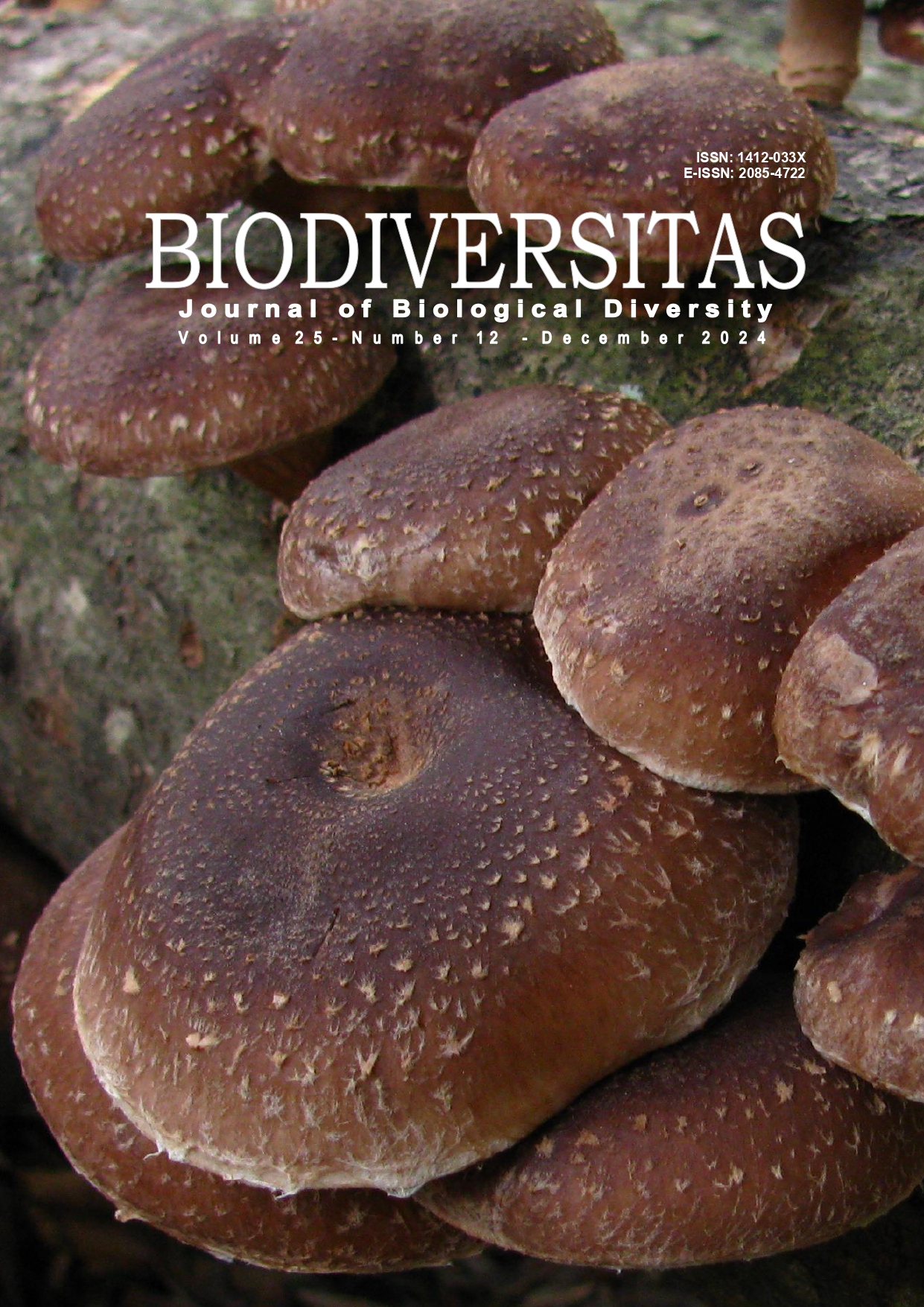Species diversity of aquatic plants in Anggerper Swamp in Merauke District, South Papua Province, Indonesia
##plugins.themes.bootstrap3.article.main##
Abstract
Abstract. Merly SL, Pangaribuan RD, Kando YE, Pane LR, Tuhumena JR. 2024. Species diversity of aquatic plants in Anggerper Swamp in Merauke District, South Papua Province, Indonesia. Biodiversitas 25: 4712-4721. The aquatic plants in Anggerper Swamp, Merauke District, South Papua Province, Indonesia have never been studied, causing the development of their potential is still insufficient. This research aimed to identify species diversity of aquatic plants, through a species identification approach, Shannon-Weaver Species Diversity Index (H’), Evenness Index (E), Dominance Index (D), and Important Value Index (IVI). Two methods used in this study are cruising survey and purposive sampling method using transect quadrant. There are two research stations with 120 quadrants measuring 1 x 1m. This study successfully identified 14 aquatic plant species from 9 families. Moreover, the majority of these aquatic plants are known as emergent and introduced plants. In Station I, total individuals reached 6,531 with 10 species and in Station II reached 2,576 individuals with 12 species. The diversity index for both stations tends to moderate, 1.92 in Station I and 2.53 in Station II, successively. The evenness index is stable with high uniformity, where Station I is 0.83 and Station II is 0.95, respectively. The dominance index for both stations indicates low dominance (0.21 in Station I and 0.10 in Station II). The highest aquatic plants’ IVI belongs to Nymphaea nouchali (65.66%) and Urochloa mutica (63.16%).


 https://orcid.org/0009-0005-6780-7540
https://orcid.org/0009-0005-6780-7540